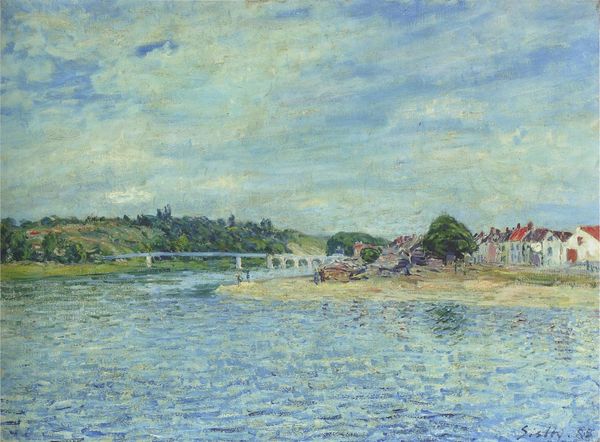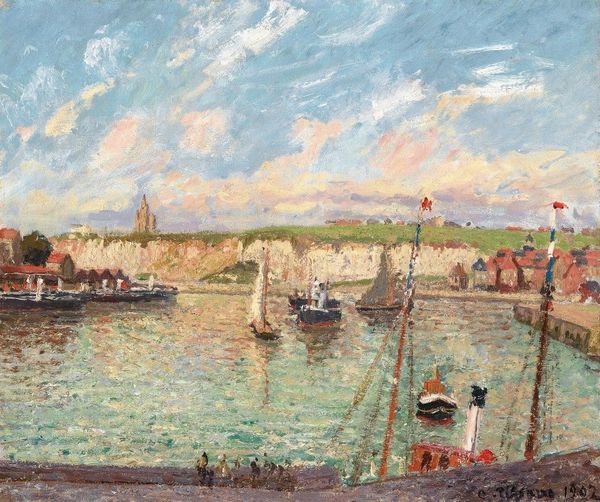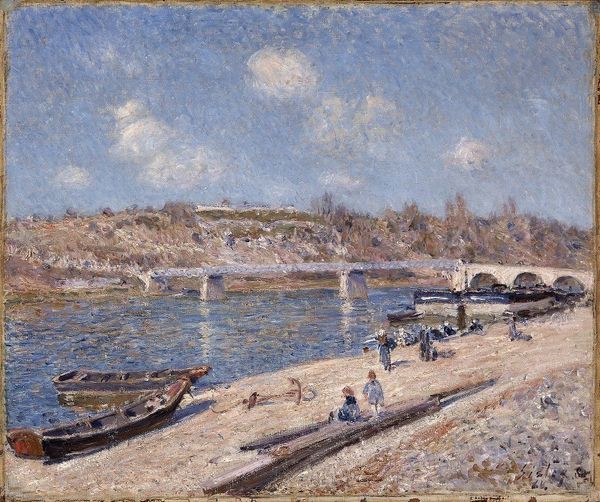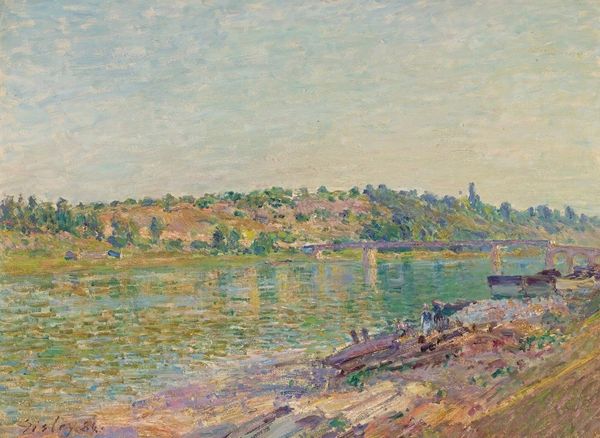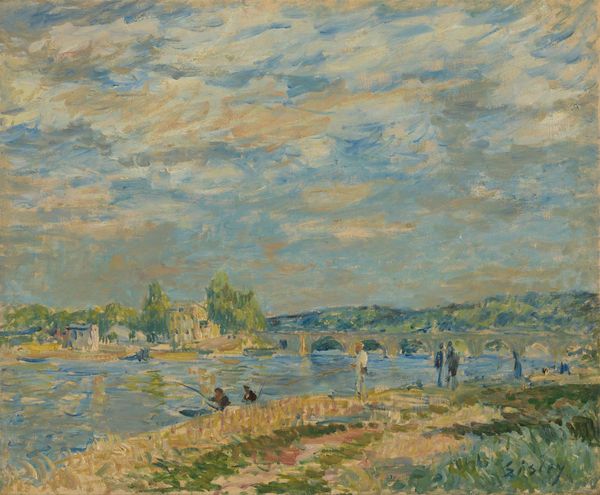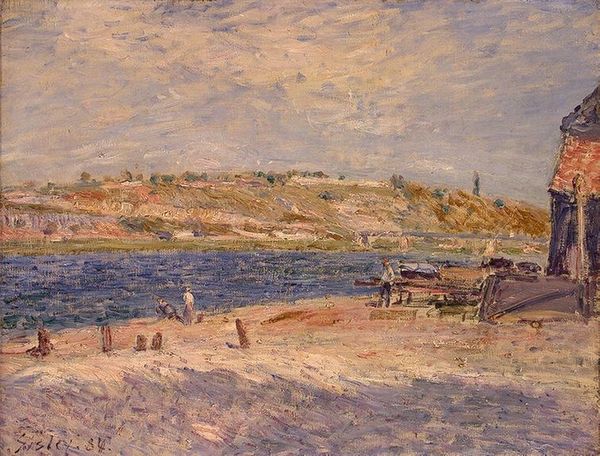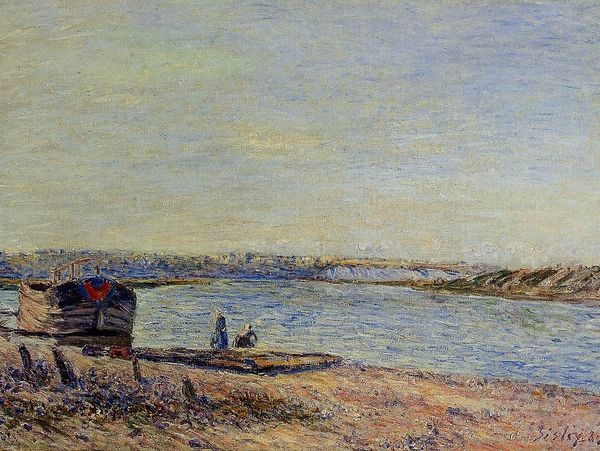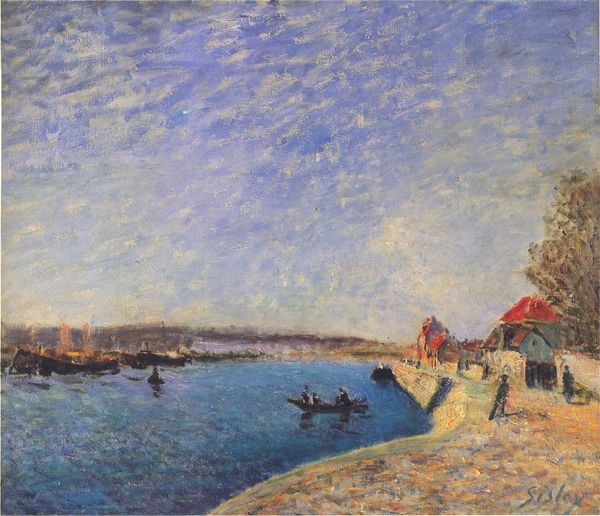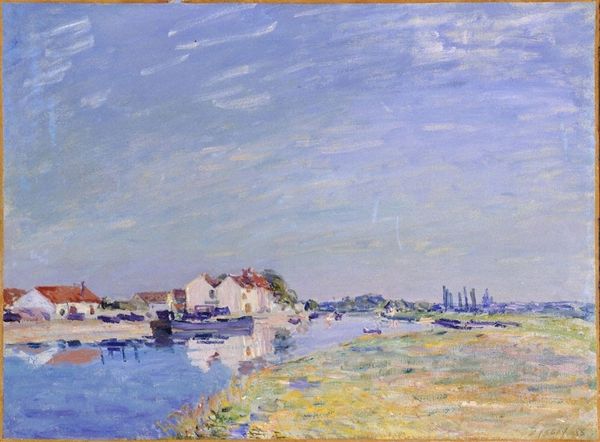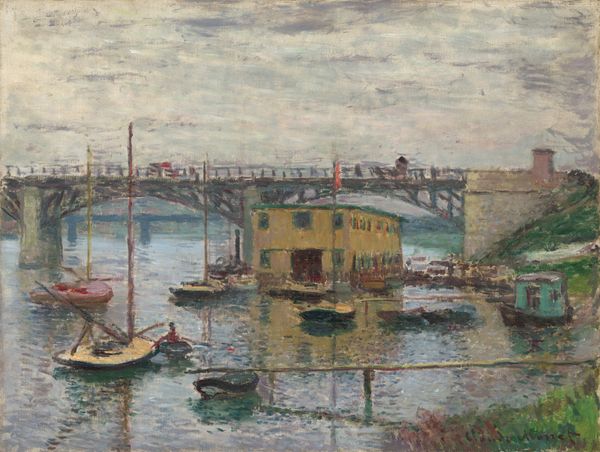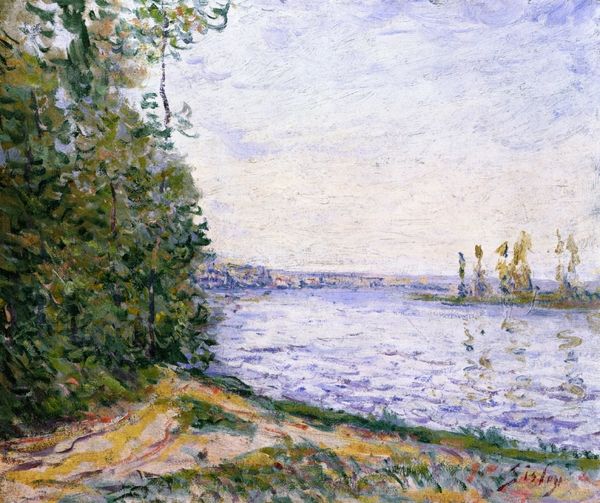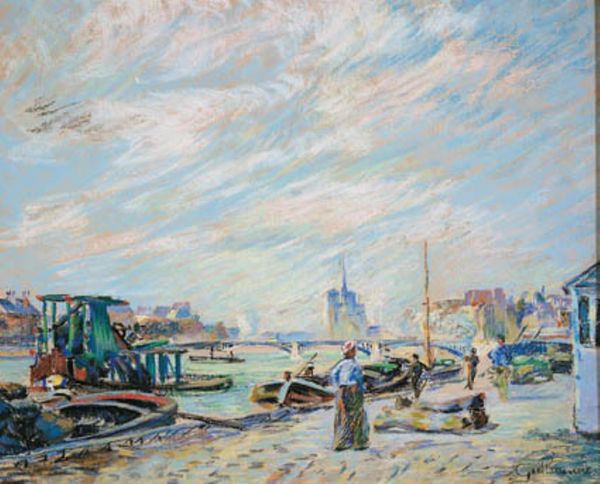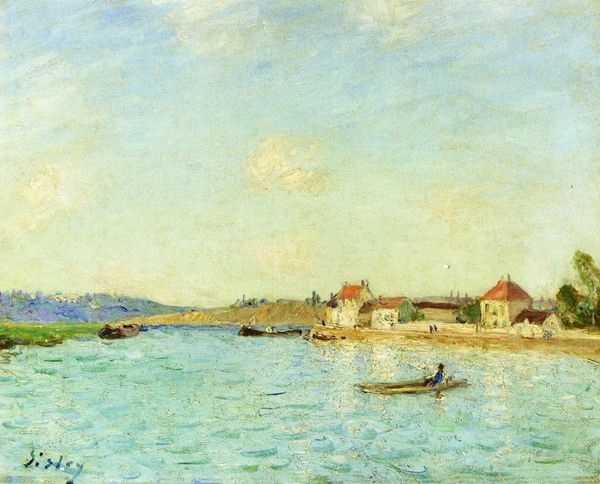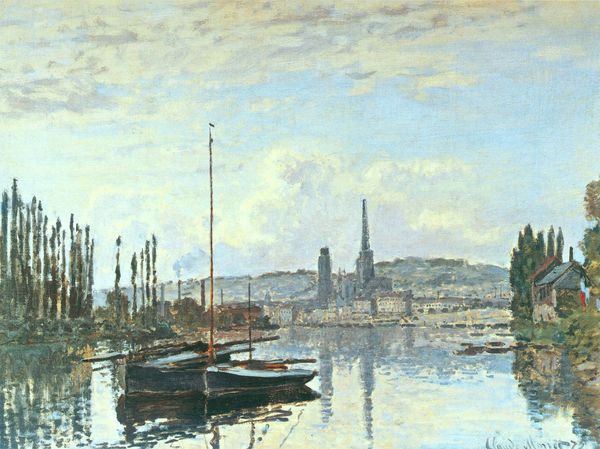
painting, plein-air, oil-paint
#
painting
#
impressionism
#
plein-air
#
oil-paint
#
landscape
#
impressionist landscape
#
oil painting
#
cityscape
Copyright: Public Domain: Artvee
Editor: This is Alfred Sisley's *La Berge à Saint-Mammès*, painted around 1884. It's an oil painting, and the brushstrokes give it such a lovely, breezy feel. The water looks so inviting, almost shimmering. What do you see in this piece, in terms of its visual construction? Curator: Immediately striking is Sisley’s articulation of space through color and brushstroke. Notice how the density of the strokes increases in the foreground, establishing a clear sense of proximity and material presence. Conversely, the horizon line, where sky meets land, is softened through diluted pigments and looser applications. The tonality evokes a calm, reflective ambiance. How does the structure affect the viewers, would you say? Editor: The contrast between the defined foreground and softer background does create a sense of depth, guiding my eye into the painting, and inviting me to walk into the scenery. Also, the colors seem very muted but pleasant, is there anything else notable about them? Curator: Observe the restrained palette, dominated by blues, creams, and earth tones. This reflects Sisley’s preoccupation with rendering atmospheric effects and light. The lack of stark contrast contributes to the harmonious feel. Notice also how certain visual rhymes appear. Can you identify any? Editor: The horizontal emphasis, perhaps? I see it repeated in the shoreline, the bridge, even the layering of the clouds in the sky, really anchors the composition. What would you say Sisley might be exploring in this piece formally? Curator: Exactly. That horizon acts as an armature and grounds the composition and viewing. The subject matter, therefore, seems to recede in importance, serving as a mere vehicle through which to study the transient qualities of light and color, reflecting a larger movement towards abstraction and emphasizing form above representation. Editor: That's fascinating. I always thought Impressionism was about capturing a fleeting moment. It sounds like it might be as much about the artistic process itself. Curator: Precisely. Art for art’s sake becomes its own subject. The flattening effect achieved through a reduction in representational accuracy enables a concentrated engagement with form and colour relationships. The picture then is a testament of surface application.
Comments
No comments
Be the first to comment and join the conversation on the ultimate creative platform.
